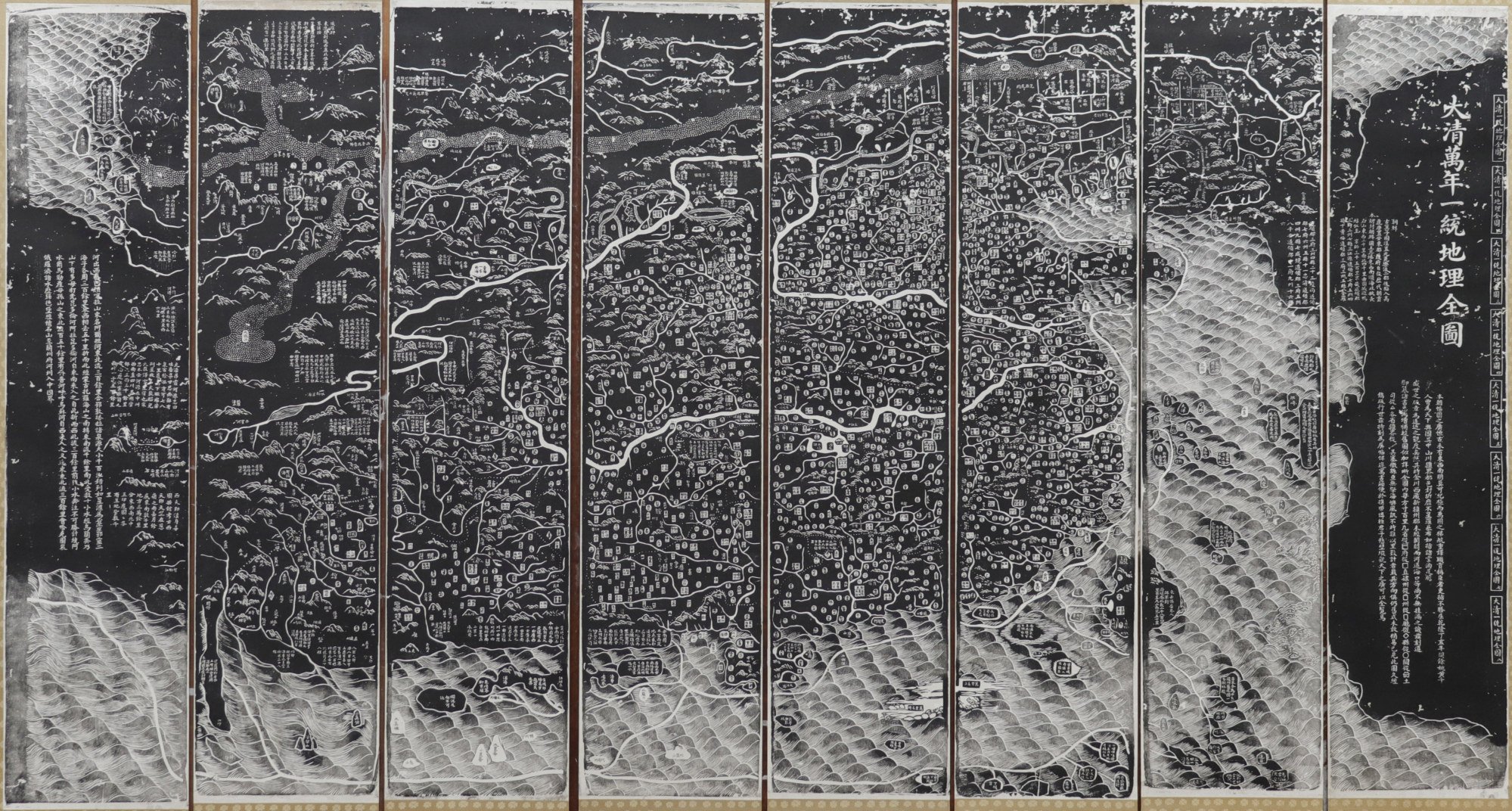
Much of the information needed had already been gathered. From as early as the 6th and 7th centuries Sui dynasty central governments had instructed local authorities to produce gazetteers, although in some areas these had been produced for centuries even before that.
They show the distances between key towns, and contain assorted information on the local economy, natural history, culture and famous personages.
How the Yongle Emperor built Beijing in his honour
How the Yongle Emperor built Beijing in his honour
Upon taking control, each new dynasty commanded the whole country to submit these gazetteers to the capital so as to assemble them into a complete picture of their empire. Kangxi decreed the creation of the Da Qing yitong zhi, or Comprehensive Gazetteer of the Great Qing, which was then compiled in the same way.
His dissatisfaction stemmed from the fact that materials submitted showed no consistency in presentation or in contents, their maps all drawn to different standards. Assembling these disparate sources into a coherent whole required a degree of imagination not congruent with accuracy.
Past officials had fudged their way to a result, but Kangxi was a new kind of emperor, whose education had included mathematics and geography under Ferdinand Verbiest, a Flemish Catholic member of the Jesuit order of missionary priests.
As a result, Kangxi knew about the integration of astronomy and cartography, and had seen technically proficient maps of the outside world brought in from the West.
So, perhaps to the despair of the Jesuits at court, who would have rather been spreading Christianity than pairs of compasses, in 1688, the emperor put them to work supervising the largest surveying project ever undertaken.
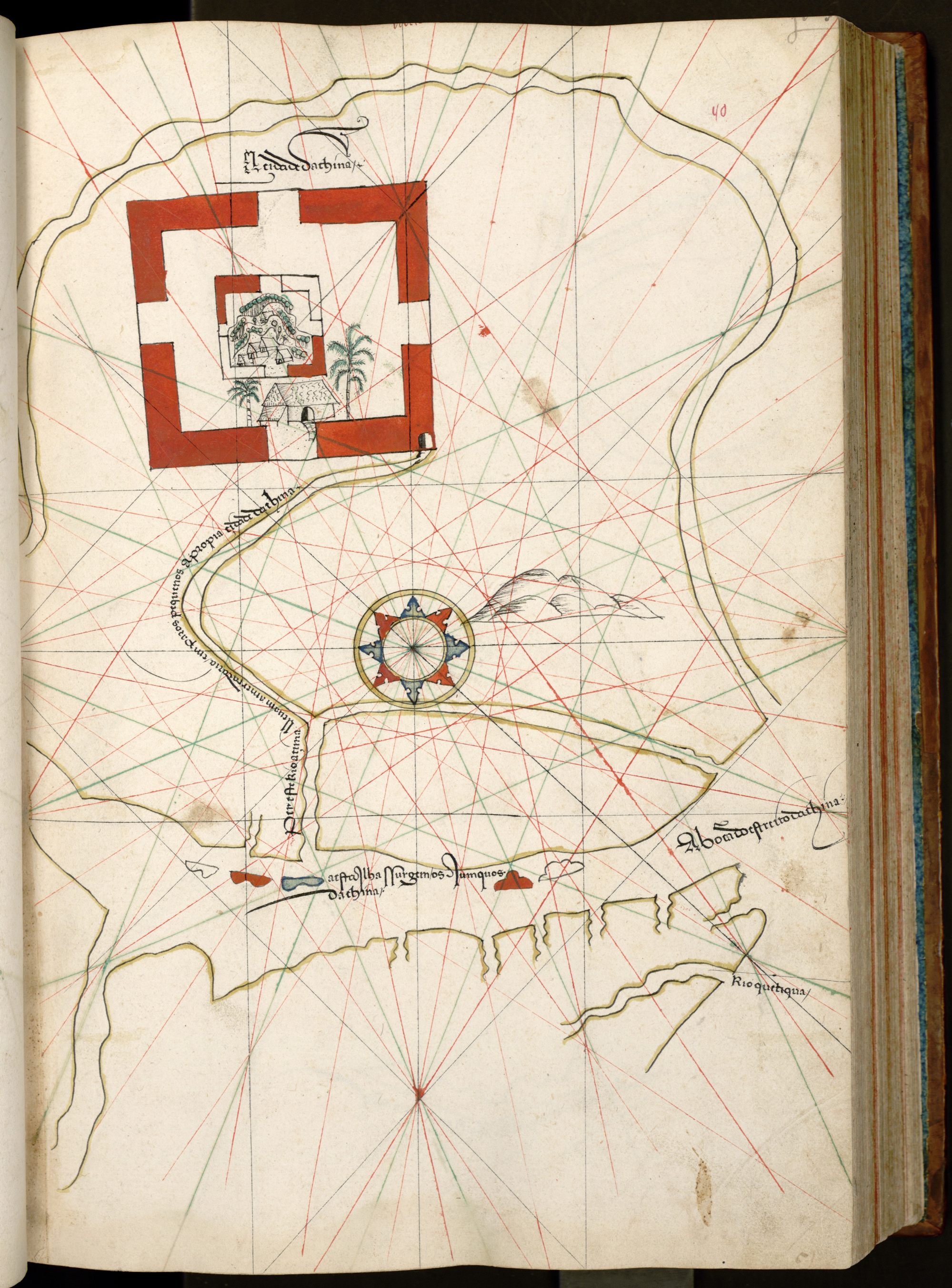
In Europe, the Jesuits took all the credit – their language skills and permanent presence at the Qing court made them practically the sole conduit through which knowledge of China reached the West.
But it was Kangxi, not the Jesuits, who initiated and funded the survey, and even earlier European knowledge of China’s geography had been mainly derived from locally made maps rather than those by foreign explorers.
Today, Regnum Chinae – The Printed Western Maps of China to 1735, by Marco Caboara, a senior lecturer in the History of Cartography and the History of Science at the Hong Kong University of Science and Technology, offers reproductions of every known European map of China from 1584 up to the Kangxi survey, 127 of them published together for the first time in a sumptuous single volume of coffee-table-challenging weight.
These maps do much more than indicate a route from A to B; they describe political boundaries, place Chinese empires in their relationship to neighbouring powers and inspire dreamers as they always do.

Cartography was then a two-way means of communication, conveying political and religious views. And beneath their surfaces, maps tell stories of commercial competition and of strife between Christian sects.
The West and the East were in conversation, and the Chinese played a far greater role in expanding European understanding of China than has generally been acknowledged, and three maps in particular were milestones on the road to discovery.
In 1582, a century before Kangxi’s survey, after much campaigning and much sneaking about, the Jesuits finally obtained permission to reside in China although in very limited numbers.
For nearly a decade they would be restricted to Zhaoqing, a prosperous, substantial town not far up river from their China mission’s base, in Portuguese-occupied Macau.
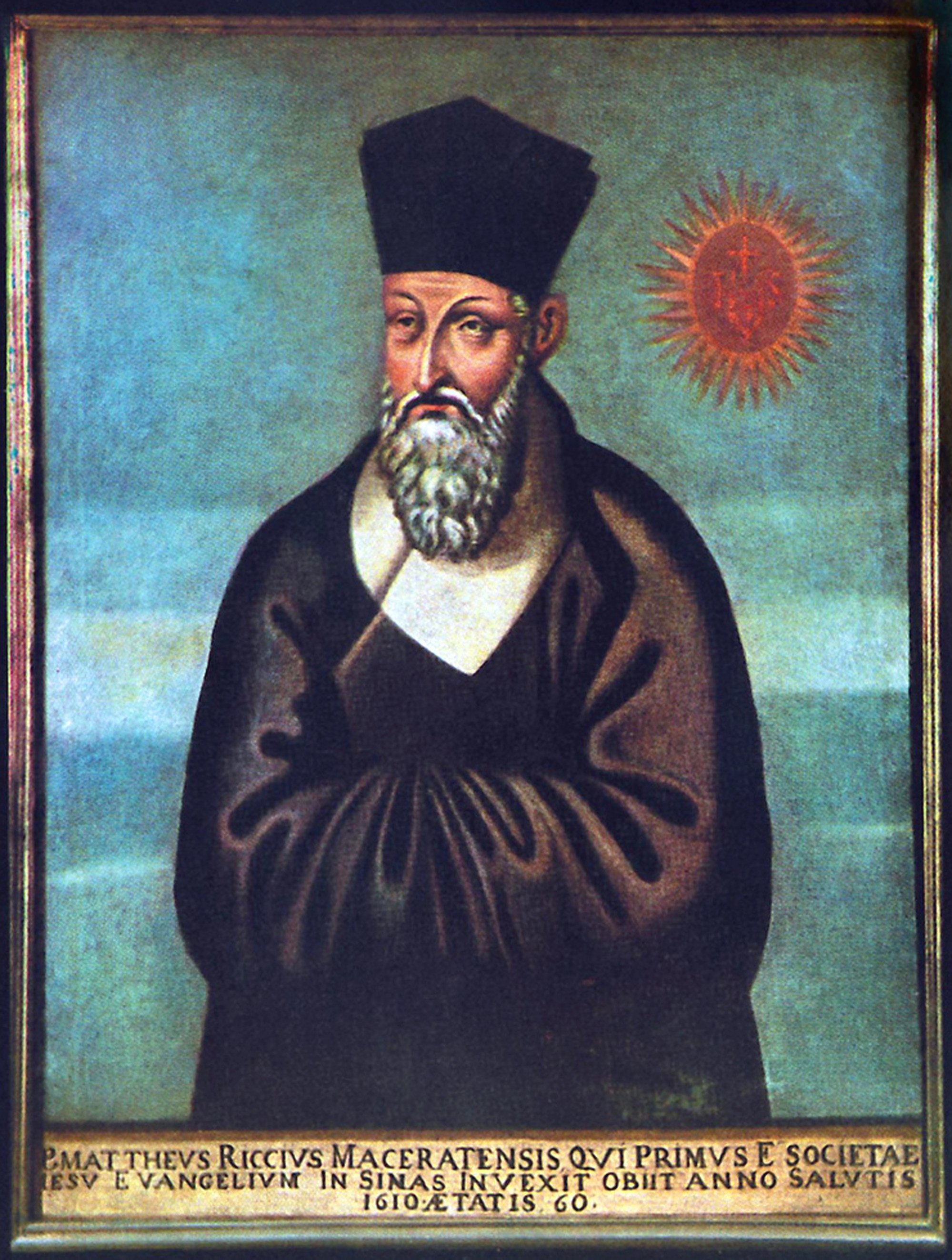
One of the maps was probably Gerardus Mercator’s groundbreaking 1569 map of the world, although the cartographer had Protestant leanings and was therefore distasteful to Catholics. Mercator had found a solution to representing the surface of a sphere in two dimensions in a way that is easy to understand, keeping an upright north-south orientation to all land masses.
This is the projection familiar to us today, although since its lines of longitude stay parallel instead of converging to a point at the poles, the greater a country’s distance from the equator, the wider than its actual size it appears.
This map was a source of wonder to the Chinese, although they were puzzled that China was not at the centre, filling the space, but rather a relatively small place off to one side.
“The reception of Ricci’s map was very diverse,” says Mario Cams, an associate professor of Chinese Studies at the Belgian university KU Leuven and a contributor to Regnum Chinae. “You had people who reacted with, ‘What is China doing in this one corner of the map?’ And the Jesuits saying, ‘That’s not China – that’s all of Asia!’”
The outline of China on Mercator’s map was vague, but Ricci also possessed the first European printed map of China, published in Antwerp by Abraham Ortelius in 1584, and later added to what is considered the first atlas, Theatrum Orbis Terrarum (Theatre of the World), originally published around 1570.
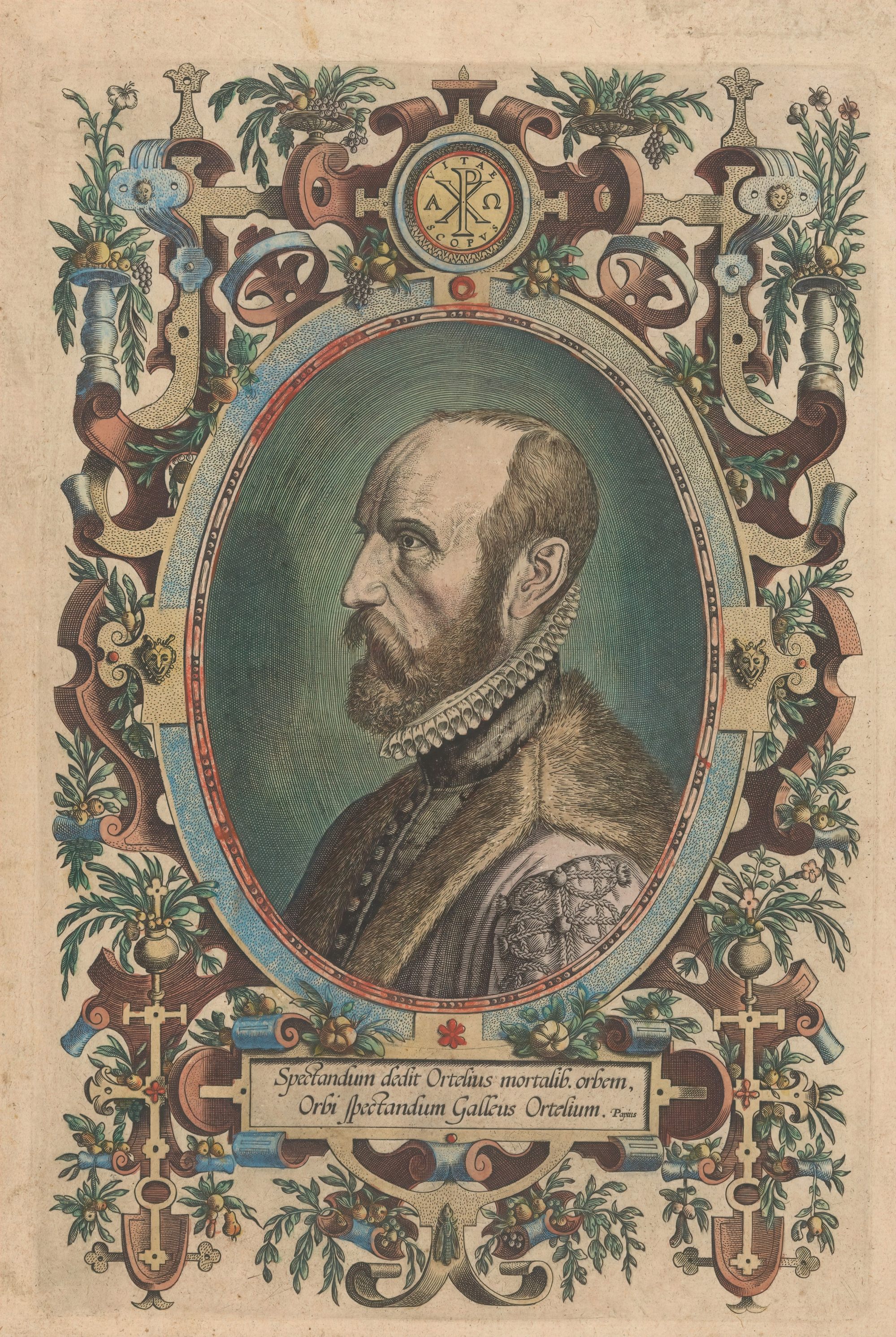
This had been a bestseller and started a fashion in Europe for large books with one map to a page.
As Regnum Chinae shows, the Ortelius map was a thing of beauty, although oddly oriented, with the west at the top. Beijing was misplaced too far to the north, and an overly elongated China had been rotated, probably to better fit the page.
Cities were indicated by little clusters of distinctly European towers in red, a network of rivers was presumed to be fed by blue lakes of dubious reality, and the Great Wall made an appearance as brief stretches of red crenellations and towers linking sections of rugged mountains in an improbably straight line.
Tented camps dotted the blank space of Mongolia, galleons tossed on stippled seas, and otherwise empty areas featured carts drawn by sails, which would go on to become linked with China in the European imagination, and appear on subsequent maps of the country.
“There is a lot of debate about what is the source for this map,” says Caboara. “From Canton to Fujian, that kind of detail comes from sea charts. For everything north of Nanjing – everything inland – it most likely was some kind of Chinese map. There were people in Europe who had the help of some Chinese servants to understand these maps.”
How a Chinese emperor fell for his carer, 17 years his senior
How a Chinese emperor fell for his carer, 17 years his senior
The south coast was drawn with remarkable accuracy, and likely taken from the portolan maps of Portuguese mariners, which included detailed portrayals of the coastlines they followed, with inlets, harbours and hazards. But much of the east coast was vague, the Portuguese having not yet fared that far, and the information on China’s interior, left snowily blank on portolan maps, likely came from a Chinese source.
The earliest Chinese map known to have reached Europe was printed in Fujian in 1570, and “sent to King Philip of Spain”, says Caboara. “It’s in the archives in Seville. So that map, we know, reached Europe a bit before the Ortelius map.”
Ricci and his colleagues produced a new map of the world, combining Ortelius and other sources, inventing Chinese names for foreign locations, and placing China firmly in the centre. He hung it on the wall for visitors to his mission in Zhaoqing to see.
This first effort was a relatively rough exercise, perhaps intended to make points about China’s true relationship to the rest of the world, and Rome’s importance.
No Jesuit map was without its propaganda element, and the message was of Catholic unity, not of the schism between Christian sects that was splitting Europe apart. The map was swiftly copied by the Chinese and published without the priest’s permission.
Many of the Jesuits felt that Chinese society in general, and its intellectual culture, was more advanced than in Europe
Mario Cams, contributor to Regnum Chinae
The Chinese already had a long history of astronomical observation and of map-making, but they had yet to connect the two to make more accurate measurements of position.
The West had known of this since even before Ptolemy (AD100-170), an Egyptian astronomer, mathematician and geographer who lived mostly in Greece.
In AD150, Ptolemy published his Geography, which offered a system of coordinates and instructions on map-projection methods, and provided longitude and latitude for many places known in his time.
More than a thousand years later, cartographers were still trying to reconcile Ptolemy with the discovery of the Americas and fresh information from voyages to the East.
“Western cartography had this model from Ptolemy, of projections that is based on the fact that astronomy and geography are connected,” says Caboara, “Every book of geography would have a part on astronomy, a part on geography, and then they would explain why, by astronomical observation of certain geometrical rules, you can stretch a sphere into a plane.”
China’s long history of rule-breaking emperors
China’s long history of rule-breaking emperors
Chinese maps were more simply constructed, mainly by measuring the distances between key points. But the foreigners still found much in China to impress.
“Many of the Jesuits felt that Chinese society in general, and its intellectual culture, was more advanced than in Europe,” says Cams. “They were particularly impressed by the moral culture of the Confucian scholar that existed in China and the intellectual networks that existed all across China, supported by a book and print culture that was much older than the one in Europe, and which Matteo Ricci wrote about in his diary.
“He said the amount of books and the cheapness of books in China is astounding, and it’s something that we in Europe could only hope for.”
The late-Ming era was relatively liberal about the production and distribution of information, and anyone could have a book printed privately, keeping the wood blocks to produce further editions if needed.
The original Ming dynasty gazetteer ran to 90 volumes and in Ricci’s day these were publicly available in print, as were privately produced volumes that criticised the original for being out of date or impractical.
[Ricci] found that the maps initiated a lot of interest from a Chinese audience concerned with where the Ming state was going and China’s place in the world.
Mario Cams
It would seem that Ortelius’ atlas was not the first. The Chinese had one in print a decade earlier, although it contained far less knowledge of the outside world.
The Jesuits sensed an opportunity.
“They see there is a huge hole in the market,” says Cams, “spiritually and in terms of discourse of space. And what they start doing is what they do best. They’re educated men from Europe and they have atlases and other books with them. They’re not cartographers and they’re not especially interested in maps.
“But they notice that maps happen to be something for which there is really a need in Chinese intellectual life. And the print market allows them to spread their ideas.”
Even when printed as separate sheets rather than bound into gazetteers or atlases, maps carried text and other illustrations with messages beyond those of geography, so “Ricci is using the map as a sort of social lubricant”, says Cams.
“He found that the maps initiated a lot of interest from a Chinese audience concerned with where the Ming state was going and China’s place in the world. This is a prime opportunity not just to show their world view and image of the world to a Chinese audience, but to say where this world of men comes from.
“It is stated that both the Earth and the heavens are spherical and that [cartographic] projection is basically a projection from the heavens onto the Earth, and this is the link between mankind and the divine.”
It’s an overtly Christian cosmology.
But it was not until 1602, after he had become the first foreign missionary to live in Beijing (and was able to measure its true latitude), that Ricci produced a more detailed and accurate version of his world map, five foot by 12 foot and printed across six sheets.
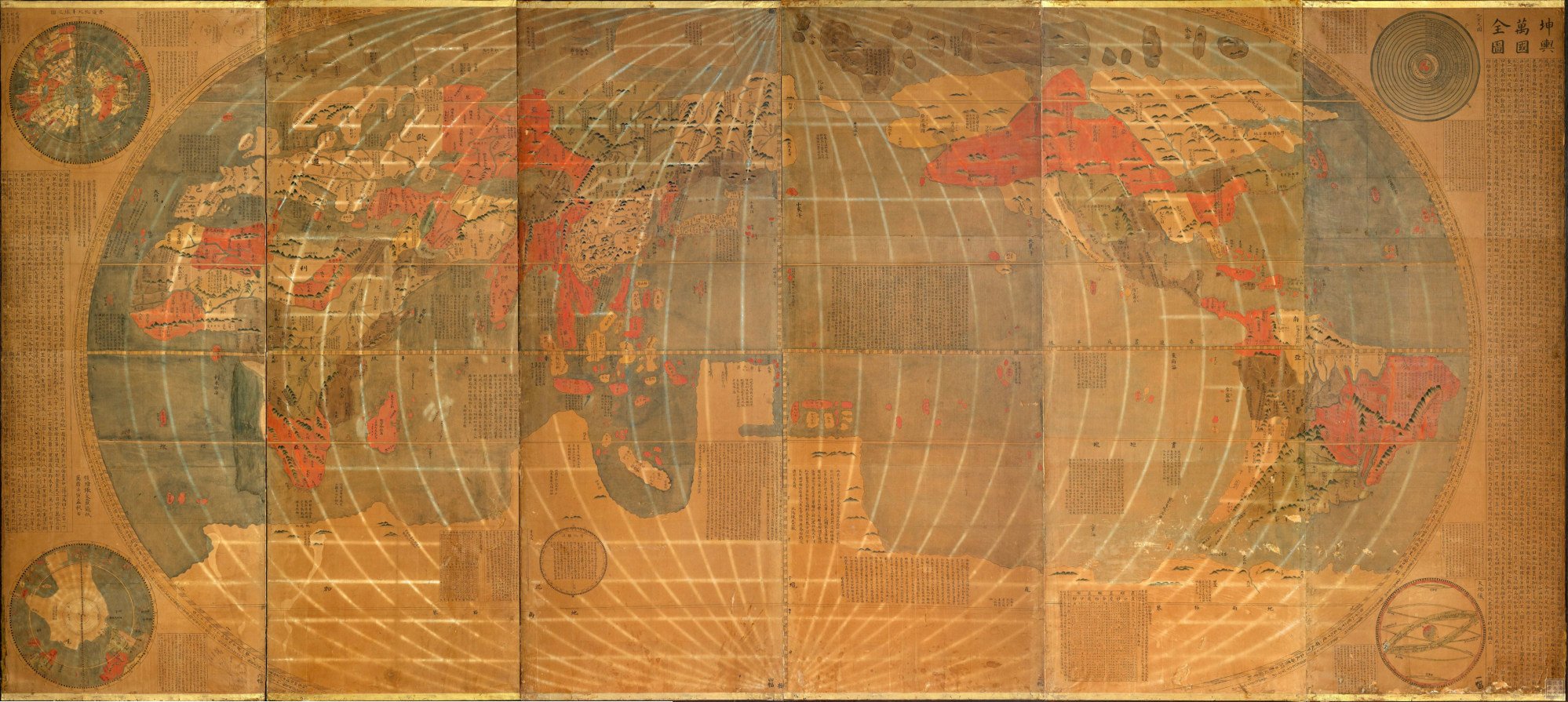
“In the 1640s,” says Cams, “there’s even a private atlas being produced specifically arguing against the Jesuits’ view of the world, [stating], ‘We have this long tradition, we know how big the world is, and it’s not at all what those Jesuits are saying that the world should look like.’ So the resistance continues to a large extent.”
There was a rush of fresh cartography as the Ming dynasty headed towards its collapse in 1644, and many Jesuits returned to Europe, fleeing the turmoil of peasant insurrections and the arrival of Manchu forces.
Professional opportunists, they sought instruction from Rome on whether they should support the Ming dynasty or side with the invaders. They took many Chinese maps with them.
Italian Jesuit Martino Martini reached China in 1643, and after the suicide of the Ming Chongzhen emperor and the fall of Beijing, in 1644, he initially supported the prince who had set himself up as emperor of the rump Southern Ming.
Various Jesuits ended up assisting both sides in matters such as casting cannons, but those who waited in Beijing survived the transition from Chinese to Manchu rule.
‘Railway imperialism’: how China bent to those that owned its tracks
‘Railway imperialism’: how China bent to those that owned its tracks
The Manchus were more practical and less tied to notions of the central importance and superiority of China, and were more willing to take good advice from wherever they could get it.
When Manchu Qing forces trapped Martini in Wenzhou, Zhejiang province, he smoothly changed sides. He then travelled to seven out of China’s 15 provinces before returning to Europe with documents relating to a dispute within the Catholic Church over the Jesuits’ permissive attitude to many Chinese traditional beliefs.
He had meetings with various printers across Europe, and oversaw the publication of his history of the Manchu invasion, De Bello Tartarico, in Antwerp in 1654, reaching Rome the following year.
Martini’s Novus Atlas Sinensis, published in Amsterdam in 1655 as part of a larger world atlas, revolutionised the understanding of Chinese geography, although, as Lin Hong, a faculty member in Shanghai Normal University’s Department of History, points out in Regnum Chinae, it was not as scientifically accurate as usually presented.
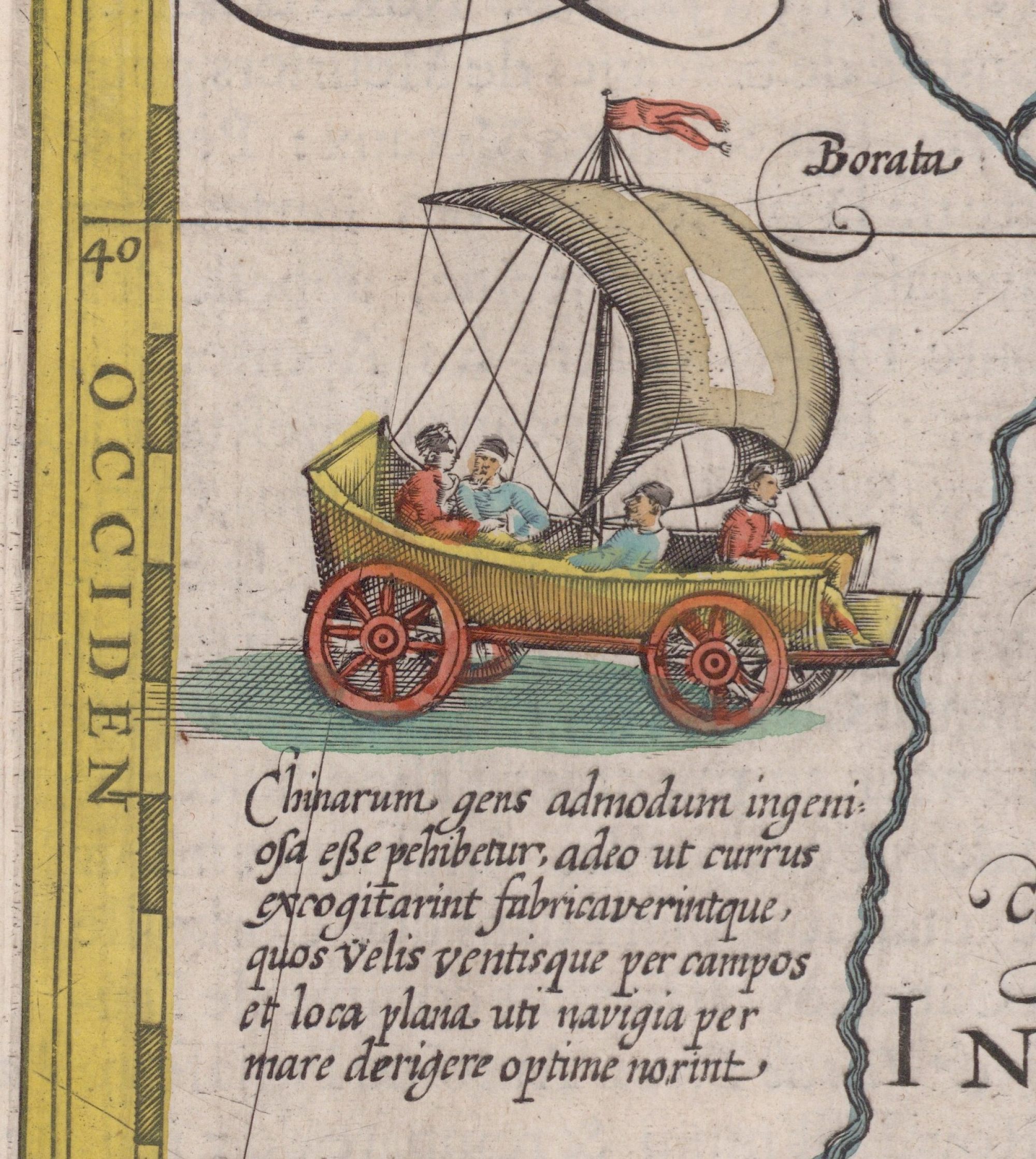
Martini probably worked with no more than 10 measurements of latitude taken by himself and other Jesuits, and for the rest, like Chinese officials before and after him, he assembled a larger picture of China from individual local maps.
But he imposed a system of reference lines on coordinate-free provincial maps, and then aligned them where the same town appeared on maps of two neighbouring provinces, or where rivers crossed from one province to another.
Six lines of longitude were borrowed from preceding famous cartographers, which made his maps less accurate in that way than those of Ricci and his colleagues, who took their own accurate longitudinal measurements during lunar eclipses.
Latitude can easily be calculated by using an astrolabe to measure the angle between a fixed star (the Pole Star in the northern hemisphere) and the horizon. Measuring longitude is more tricky.
So long as the clocks at any two points have been accurately set to their local times then the number of degrees between them can easily be calculated.
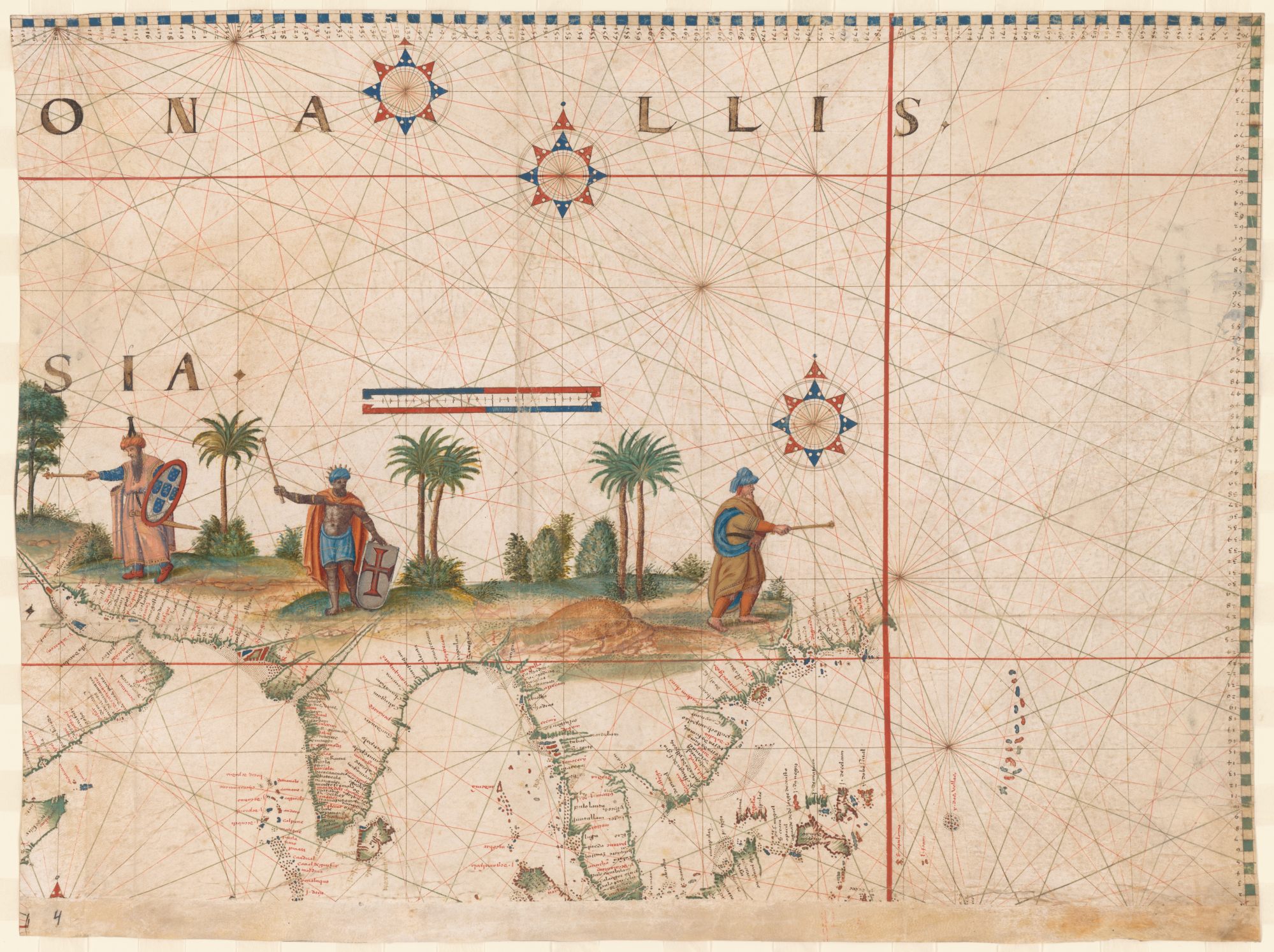
The Earth takes 24 hours to make one revolution, which means that each hour of time difference between two points is equal to 15 degrees of longitude. However, until the mid-18th century there were no portable clocks that could maintain an accurate record of the time at the point of origin, whether Greenwich, Cádiz or Lisbon, to compare with local time.
But a lunar eclipse – the appearance of the Earth’s shadow on the face of the moon – is a synchronising event visible from any point on the side of the planet facing it. Noting the local time of the beginning of the eclipse allowed later comparison with the time of the eclipse at some other point, and the time difference would reveal the number of degrees of longitude between the two points.
If maps could be untrustworthy, so could map-makers. Martini claimed to have taken a reading of longitude when in Beijing, but, as Lin points out, Nasa calculations of historical eclipses suggest that none occurred while he was there.
Lin has identified Martini’s Chinese source maps and shows his method of reconciling them, also reproducing several of these sources in the book.
But Martini’s work is at least no longer muddled by references to the hearsay of Polo’s and Mandeville’s fictional trips, and Ptolemy’s calculations have finally been abandoned for a new framework. Martini properly subdivided China into provinces, and more accurately showed the courses of rivers.
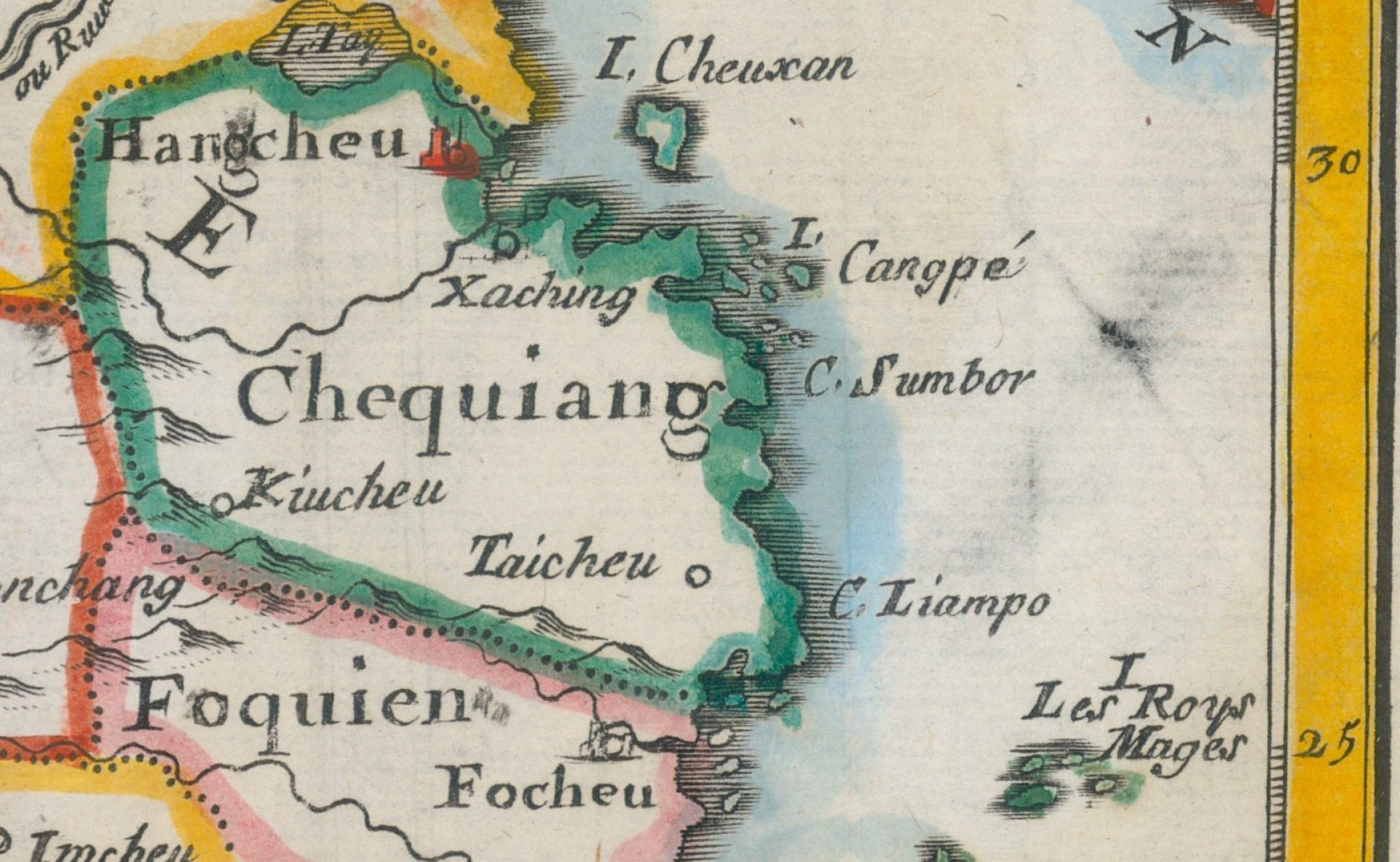
There were improvements in place names, although the competition between Portuguese, Spanish, Italian and other conflicting attempts to Romanise these would be a continuing source of confusion down the centuries – one man’s Xanton is another’s Shandong; one man’s Foquien is another’s Fujian.
Nevertheless Martini’s China map is instantly recognisable to us today. The provinces and neighbouring islands are in their proper places, the Yellow River, labelled in Latin as “Saffron-coloured River”, makes its familiar northern loop, and the Great Wall is roughly where it should be.
It remained the main reference for Chinese geography until European versions of the maps from Kangxi’s survey appeared, in 1735.
After that survey, Jesuits took copies of the multi-volume atlases and multi-sheet maps they had created to Paris, where they kept them to themselves.
Eventually, however, pressure from intellectuals led to their publication. They were translated, redrawn and reformatted by Jean-Baptiste Bourguignon d’Anville, later cartographer to the king of France.
Charting the human story through how we drew our maps
Charting the human story through how we drew our maps
Forty-one of d’Anville’s maps of China and individual provinces were included in the revolutionary four-volume Description géographique, historique, chronologique, politique, et physique de l’empire de la Chine et de la Tartarie chinoise (1735), edited by Parisian Jesuit Jean-Baptiste du Halde.
D’Anville’s overall map of China is claimed to be the most comprehensive to date, including both Tibet and Chinese Tartary (Manchuria and Mongolia), as well as territory as far west as the Caspian Sea.
China’s identity, size, shape, position within the Manchu empire, and relationship to neighbouring kingdoms had finally become clear to Western readers.
A cartouche decorated with a hunting scene gives both European and Chinese scales, and that carrying the title is decorated with an image of the emperor, as well as one of a visit by two Jesuits to an agrarian settlement, accompanied by an armed mounted escort – a message about the mission’s status and importance in China.
The map was repeatedly revised and reprinted in Europe, and yet, back in China, those maps derived from the Jesuit survey had little lasting impact.
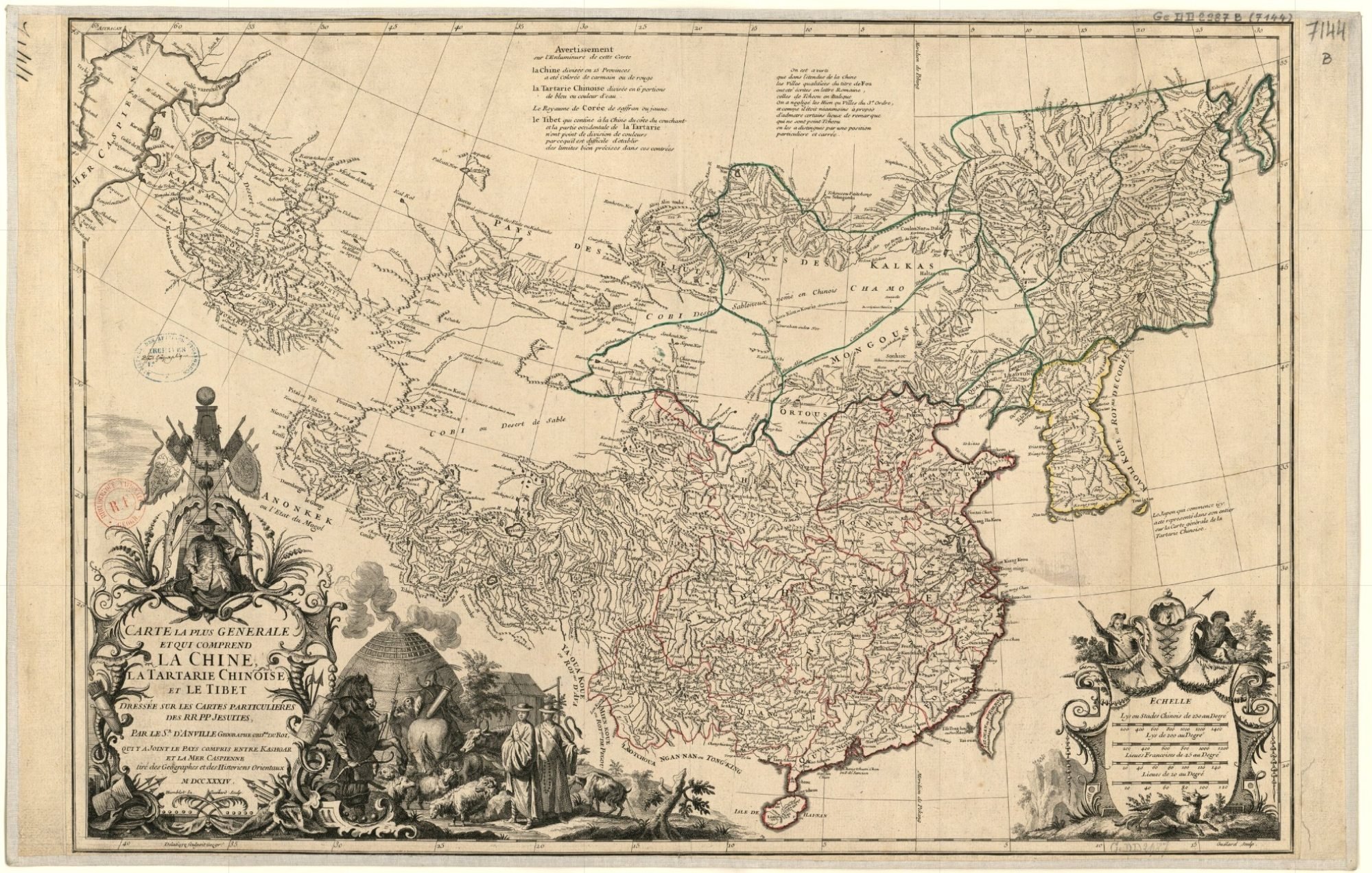
“They do this gigantic survey with great success, but it doesn’t really catch on,” says Caboara. “They are leaders of this project but at the same time it fades away when imperial patronage fades away. It doesn’t change the image of China, or the image of the world among Chinese.”
Apparently the Jesuits were not as important or influential as they liked to suggest.
Readers of Regnum Chinae may decide for themselves, or they can see many of the originals at the Hong Kong University of Science and Technology.
An inspired acquisitions policy by founder librarian Min-min Chang means that the merely 30-year-old institution has one of the world’s greatest collections of maps of China, many now on display in the exhibition “China in Maps: 500 Years of Evolving Images”, which runs until June 7.

